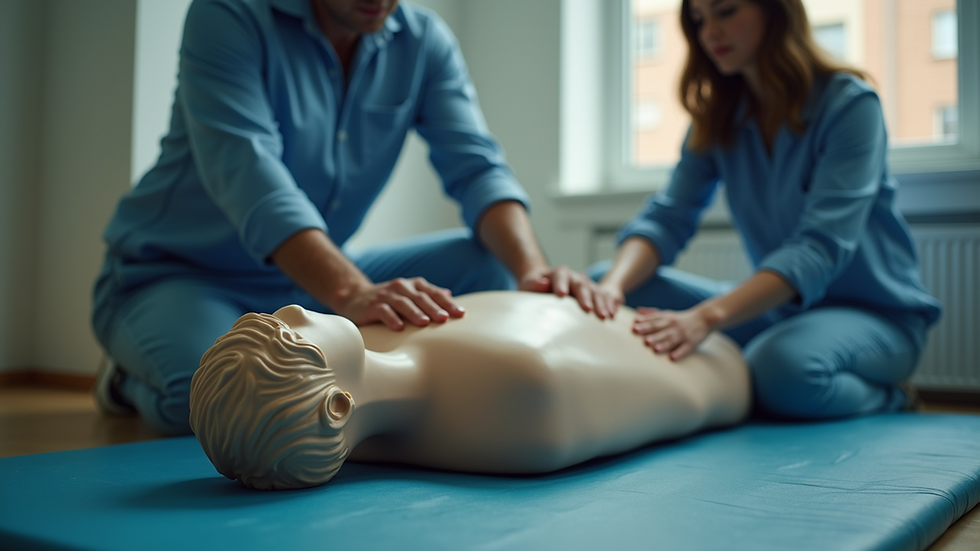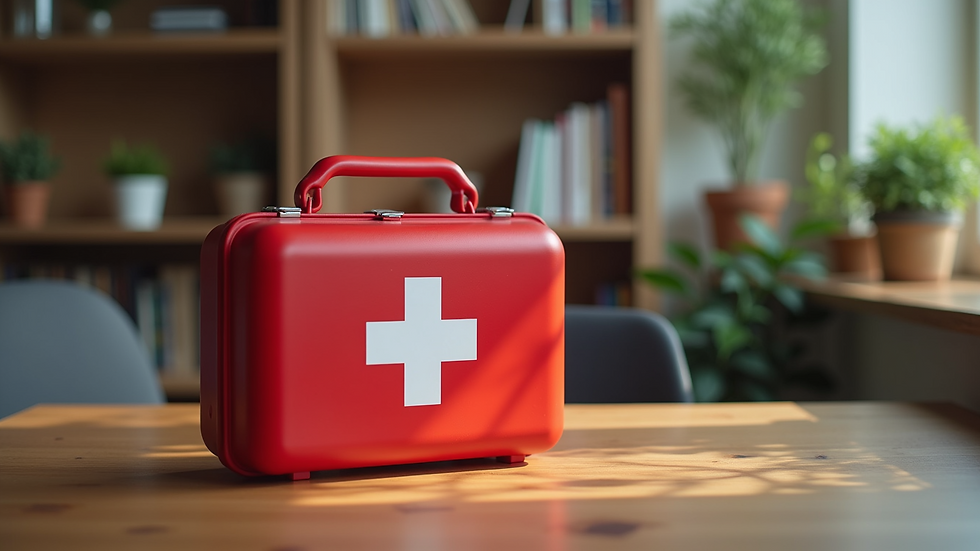How to Effectively Administer Life-Saving CPR Techniques for Various Emergencies
- SheepDog Society Admin.

- Aug 14
- 4 min read
In an emergency, knowing how to perform CPR (Cardiopulmonary Resuscitation) can be the difference between life and death. This vital skill is crucial not only for first aid professionals but for anyone who might encounter a health crisis. This blog post will guide you through the various CPR techniques, including those for choking, heart attacks, seizures, dehydration, and gunshot wounds.
Understanding CPR
CPR is a lifesaving procedure used in emergencies when someone stops breathing or their heart stops beating. It combines chest compressions and rescue breaths to maintain blood flow and oxygen to vital organs until medical help arrives.
The main aim of CPR is to restore circulation and breathing, which can prevent brain damage. According to the American Heart Association, early CPR can double or triple a victim's chance of survival.
CPR for Choking Victims
Choking happens when an object blocks the airway, making it hard to breathe, speak, or cough. Recognizing the signs of choking early can save a life.
Steps to Perform the Heimlich Maneuver:
Assess the Situation: If the person can cough or speak, encourage them to keep coughing. If they cannot, you must act quickly with the Heimlich maneuver.
Position Yourself: Stand behind the choking person, wrapping your arms around their waist securely.
Make a Fist: Position your fist just above the person’s navel, where your grip can have the strongest effect.
Thrust Inward and Upward: Using your other hand, grasp your fist and give quick inward and upward thrusts. Repeat until the object is expelled or the person becomes unconscious, which occurs in about 10% of choking incidents.
Call for Help: If the victim loses consciousness, call for emergency services immediately and start CPR.

CPR for Heart Attack Victims
A heart attack occurs when blood flow to the heart is obstructed. Common symptoms include chest pain, shortness of breath, and discomfort in the arms, back, neck, or jaw.
Steps to Administer CPR:
Call Emergency Services: If you suspect a heart attack, get help right away.
Check Responsiveness: Gently shake the person and shout to see if they respond.
Begin Chest Compressions: If unresponsive, place the heel of one hand on the center of the chest, interlock your fingers, and push down hard and fast at a rate of 100-120 compressions per minute, which equals about two compressions every second. This rate has been shown to be effective for keeping blood flowing.
Rescue Breaths: If you are trained, after 30 compressions, give 2 rescue breaths. Ensure the airway is clear by tilting the head back slightly.
Continue Until Help Arrives: Keep performing CPR until emergency personnel arrive or the person shows signs of life.
CPR for Epileptic Seizures
During a seizure, a person may lose consciousness and experience convulsions or shaking. Quick action can help ensure their safety during this time.
Steps to Assist:
Stay Calm: Ensure the area is safe and clear of objects that might cause injury.
Protect the Person: Place a soft object, like a jacket or pillow, under their head to guard against injury.
Time the Seizure: If the seizure lasts longer than 5 minutes, call emergency services as this may indicate a more serious condition.
Do Not Restrain: Avoid holding the person down or putting anything in their mouth, as this can cause injury.
Post-Seizure Care: Once the seizure ends, turn the person onto their side to keep their airway clear, which is crucial since about 30% of seizures can cause choking.
CPR for Dehydration
Severe dehydration can lead to unconsciousness and requires immediate attention.
Steps to Respond:
Assess the Situation: Look for signs of dehydration, such as a dry mouth, dizziness, or confusion.
Call for Help: If the person is unconscious, immediately call emergency services.
Position the Person: Place them on their side to prevent choking in case they vomit.
Monitor Breathing: If they stop breathing, start CPR as previously outlined.
CPR for Gunshot Victims
Gunshot wounds can cause intense trauma and excessive blood loss, making swift action vital.
Steps to Take:
Call Emergency Services: Speed of response is crucial, as professional help is needed right away.
Control Bleeding: Apply direct pressure to the wound using a clean cloth or bandage, which can significantly reduce the risk of shock.
Position the Victim: If they are conscious, keep them calm and still. If unconscious, lay them on their side to help with airway clearance.
Monitor Vital Signs: Check for breathing and pulse. If absent, begin CPR immediately. In shooting incidents, about 20% require CPR.
Continue Until Help Arrives: Do not stop CPR until medical professionals take over or the person starts to show signs of life.

Final Thoughts
Knowing how to perform CPR can make a significant difference in various emergencies. Understanding the proper responses for choking, heart attacks, seizures, dehydration, or gunshot wounds equips you to act decisively and effectively.
Consider taking a certified CPR course to improve your skills and gain the confidence to help in emergencies. Remember, every second counts. Your actions could save a life. Stay prepared, stay informed, and be ready to provide assistance when it matters most.







Comments